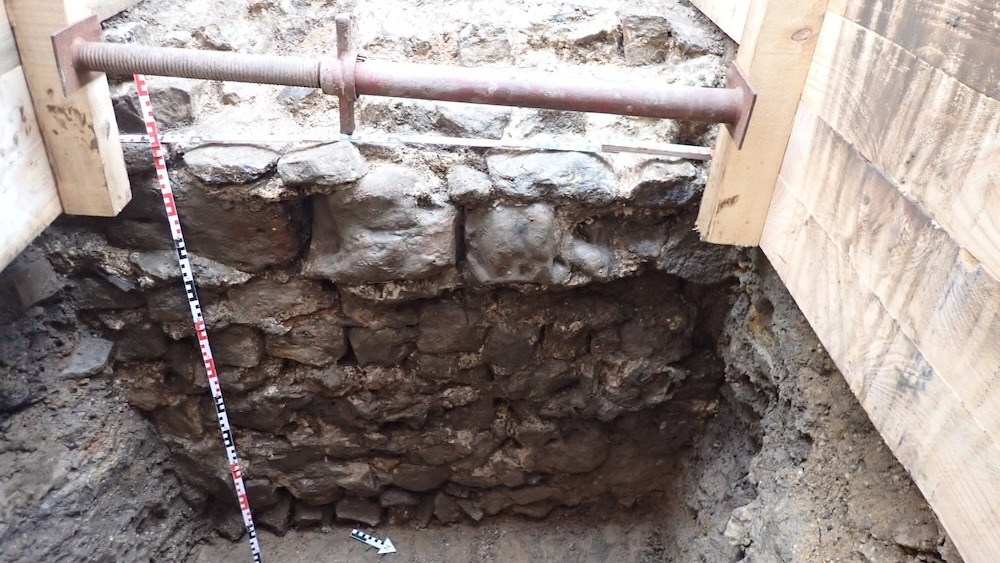Archaeologists have unearthed the ruins of a Roman fortress in Germany that once protected against barbarian intruders.
For more than a century, historians have suspected that a defense structure known as a castrum was lurking beneath a cobblestone street in Aachen, a city in western Germany. However, it wasn't until recent excavations ahead of a construction project that archaeologists finally saw the remains of the 1,700-year-old fortification. They immediately knew it was a Roman construction, according to a translated statement.
"The way the wall was built left no doubt it had to be of Roman origin," Donata Kyritz, an archaeologist and owner of sk ArcheoConsult, the firm that led the excavation, told Live Science in an email. "The concrete-like mortar and the choice of rock was typical for the Roman period. Also, the dimensions and the way the foundation was built differed from the technique used in medieval times."
The wall itself dates to around the third century and the segment that was unearthed stretches about 23 feet (7 meters) long and 35 inches (90 centimeters) wide. The full length of the wall is unknown, according to the statement.
Archaeologists think the wall may have been constructed in a circle protecting the city, the Miami Herald reported.
Related: Cult temples and sacrificial pit unearthed at ancient Roman camp in Germany
The wall also may have included a series of gates.
"Comparable castrum found [elsewhere in Germany] shows this type of gate, where two parallel walls support a tower," Andreas Schaub, an archaeologist for the city of Aachen who worked on the excavation, told Live Science in an email.
The wall was likely used to "protect against Germanic tribes," according to WDR, a public broadcasting outlet in Germany.
"We know that the castrum was built as a reaction [to] raids by Germanic tribes around 275 and 276 A.D.," Schaub told Live Science. "We don't know if there were many soldiers to run the castrum or if the inhabitants had to defend themselves. But what we know is that it works. We have no indication of any big destruction after the castrum was built."
In addition to the wall, archaeologists found shards of pottery and animal bones at the site, as well as what may have been a roadway.
"A layer of pebbles in the area of the opening suggests that there might have been pavement," Kyritz told Live Science.
Once the excavations are completed, construction work at the site will commence, according to the statement.
















